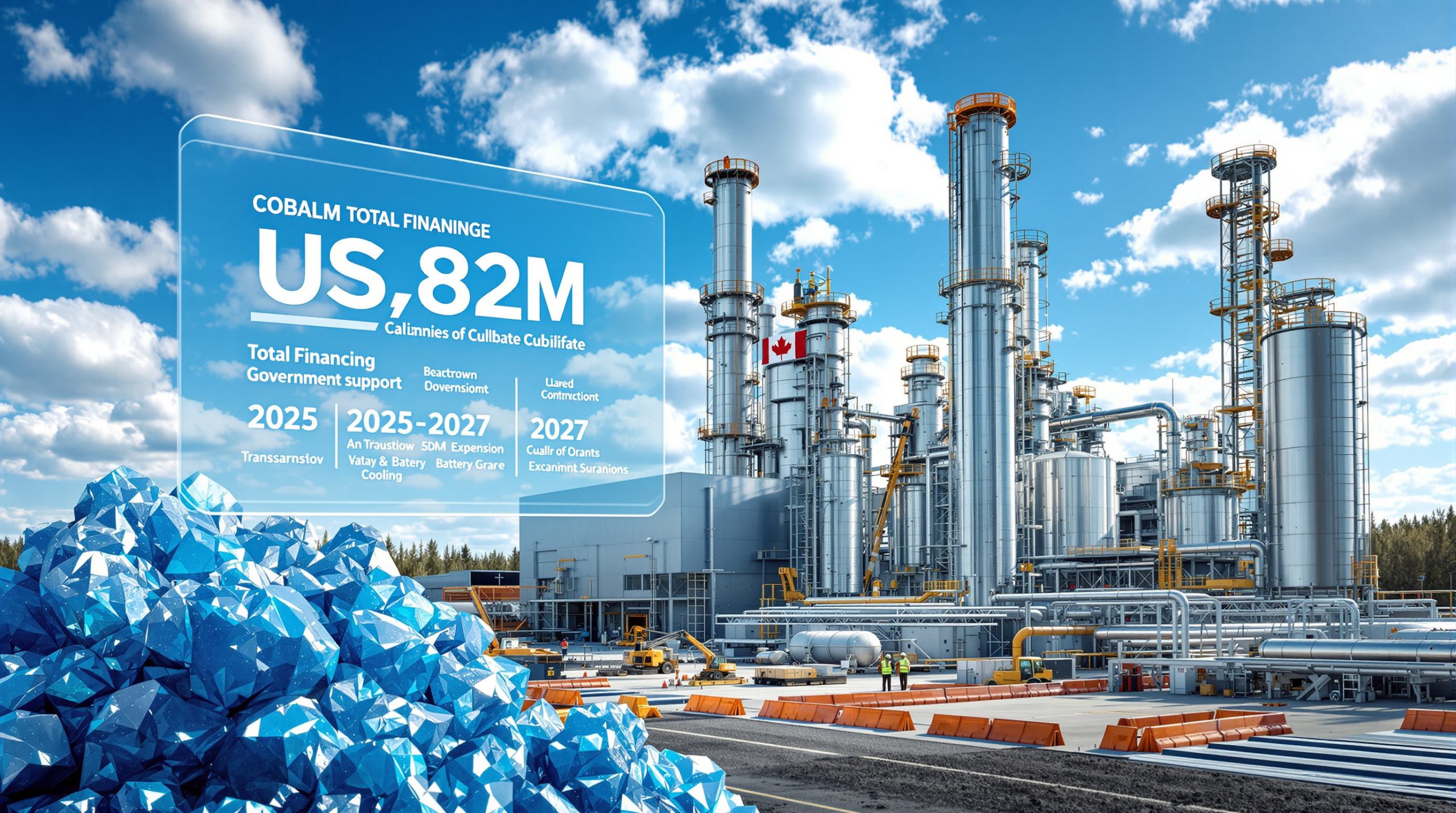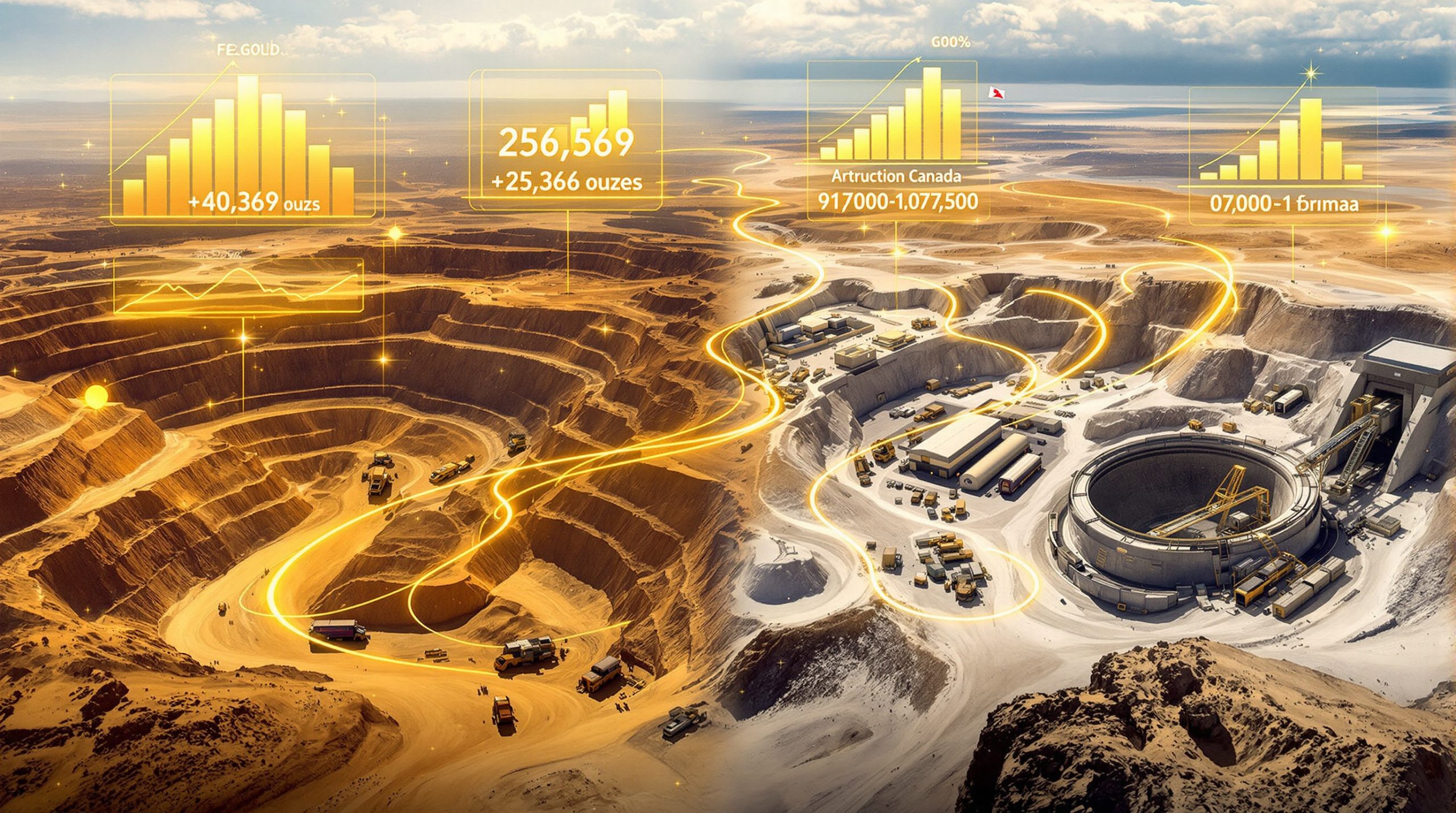What Are Junior Gold and Silver Stocks?
Junior gold and silver stocks represent high-risk, high-reward investment opportunities in companies focused on exploring and developing precious metal deposits. These companies, often with market capitalizations below $200 million, serve as the mining industry's research and development arm, driving discoveries that could become future mines. Successful juniors can deliver returns exceeding 100× during bull markets, though only 1 in 1,000 exploration projects typically advance to production.
Unlike major mining corporations, junior miners operate with limited capital and typically focus on a single project or small portfolio of properties. Their success hinges on geological expertise, efficient capital deployment, and the ability to navigate complex permitting processes—making them both challenging and potentially lucrative investing in mining stocks.
Key Characteristics of Junior Mining Companies
Junior miners typically have market capitalizations below $200 million, with many falling under $50 million. They're primarily listed on exchanges in resource-friendly jurisdictions:
- Toronto Stock Exchange and Toronto Venture Exchange (Canada)
- Australian Stock Exchange (Australia)
- London Stock Exchange (UK)
These companies operate without steady revenue streams, relying instead on equity financing to fund exploration and development activities. This capital-intensive model creates ongoing dilution risk for shareholders but allows investors to participate in potential discoveries before they're fully valued by the market.
Junior miners offer exceptional leverage to precious metal prices—when gold or silver rise significantly, junior stocks often appreciate at multiples of the underlying commodity's move. This amplification effect makes them attractive during bull markets but equally vulnerable during sector downturns.
The Evolution of Junior Mining Companies
The lifecycle of a junior mining company follows a relatively predictable path, though only a small fraction successfully navigate all stages. Understanding these phases helps investors identify optimal entry and exit points.
Exploration Phase
Most juniors begin as exploration companies focused on:
- Greenfield exploration: Searching for entirely new deposits in unexplored or underexplored areas
- Brownfield exploration: Expanding known deposits to reach critical mass for development
- Pre-resource or pre-discovery work: Highest risk but greatest reward potential
During this phase, companies conduct geological surveys, soil sampling, and preliminary drilling programs to identify mineral anomalies. Success rates are exceptionally low—less than 0.1% of exploration projects eventually become mines—but discoveries can trigger exponential share price appreciation.
Modern exploration companies employ advanced technologies like artificial intelligence and machine learning to analyze geological data, improving targeting efficiency and potentially increasing discovery rates compared to historical averages.
Development Phase
Companies that successfully define a resource may advance to the development phase, which includes:
- Publishing economic studies (preliminary economic assessments, pre-feasibility studies)
- Conducting infill drilling to better define the resource
- Navigating permitting processes
- Completing definitive feasibility studies
- Securing financing for mine construction
- Building the actual mine
This phase typically spans 3-7 years and requires significantly more capital than exploration. Companies must demonstrate not only geological potential but economic viability under conservative price assumptions.
The development phase often triggers a valuation reset as investors reassess risk factors. Companies must balance technical considerations with social license to operate, environmental concerns, and infrastructure requirements—any of which can become insurmountable obstacles.
Production Phase
If construction succeeds, the company becomes a junior producer. At this stage, they:
- Begin extracting and processing ore
- Generate revenue and potentially profits
- Continue exploration to extend mine life or discover new deposits
- Optimize operations to maximize margins
Junior producers face different challenges than explorers or developers, including operational efficiency, cost control, and resource replenishment. Successful transition to sustainable production often triggers another valuation rerating as companies begin generating cash flow and attract yield-focused investors.
How Do Junior Mining Stocks Create Value?
The Lassonde Curve: Understanding the Junior Mining Lifecycle
The Lassonde Curve, created by Pierre Lassonde (former president of Newmont and founder of Franco-Nevada), illustrates the typical lifecycle of a successful junior mining company's stock price. This model reveals two optimal buying points and one major selling point:
- First Buy Point: Before or during a legitimate mineral discovery
- Major Sell Point: When the company enters development and must prove the discovery can become a mine
- Second Buy Point: During the final months of construction leading to production
This S-curve pattern demonstrates how market dynamics explained by investor psychology drives valuations throughout a project's lifecycle. During early exploration, stocks trade primarily on hope and potential. After discovery, excitement and speculation can drive prices well beyond reasonable valuations before reality sets in during the development phase.
The "orphan period" during development creates opportunities for patient investors to re-enter positions at favorable valuations before the final construction-to-production rerating occurs.
Pre-Production Sweet Spot
Research on 124 first-time mine builders dating back to the 1980s reveals:
- 92% operational success rate (95.2% if a mine was built after a takeover)
- 75.4% of cases delivered positive returns from construction decision to production
- Average gain from construction decision to first pour: 97%
- Average gain from construction decision to commercial production: 111%
- During bull markets, average gains reached 132% (versus 20% during bear markets)
These statistics highlight the asymmetric risk-reward profile of late-stage developers approaching production. Unlike early explorers, these companies face significantly reduced geological risk, having already defined an economic resource. However, they still offer substantial upside potential as they transition from cash-burning developers to cash-flowing producers.
The pre-production phase represents a unique investment opportunity where technical risk has been substantially mitigated while valuation catalysts remain ahead. This explains why strategic investors and major producers often acquire juniors during this stage.
Why Focus on Producers and Developers?
Value Proposition
Producers and developers offer several advantages over early-stage exploration companies:
- Predictable outcomes: Easier to project future value based on production levels, metal prices, and potential cash flow
- Valuation catalysts: Companies receive significant valuation increases when transitioning from construction to production
- Production growth: Markets reward companies that can demonstrate production growth, offering leverage in bull markets
- Lower-risk exploration: Producers can fund exploration from cash flow rather than dilutive share issuances
- Infrastructure advantages: Discoveries near existing operations can be developed at much lower capital costs
Junior producers with exploration upside offer a compelling combination of cash flow and discovery potential. These companies can self-fund exploration programs, reducing dilution risk while maintaining exposure to potential high-grade discoveries.
The economics of expanding existing operations are dramatically superior to greenfield development. Capital intensity (dollars per ounce of annual production capacity) can be 50-70% lower for brownfield expansions compared to new mine builds, creating substantial shareholder value for producers that successfully expand their resource base.
Transformational Success Stories
Several junior producers have achieved remarkable success through exploration:
Kirkland Lake Gold: Grew from under $2 per share in 2015 to $57 per share in 2020 before being acquired by Agnico Eagle in 2021. The company's Fosterville mine in Australia saw production increase from 123,000 ounces in 2015 to over 619,000 ounces in 2019, with cash operating costs of only $119 per ounce.
The transformation occurred after discovering the high-grade Swan Zone, which contained reserves grading an extraordinary 49.6 g/t gold. This discovery allowed Kirkland Lake to increase production while simultaneously reducing costs, creating a cash flow machine that funded further exploration and acquisitions.
Wesdome Gold: Climbed from $1.70 per share in 2017 to $14.85 in 2020 after discovering high-grade gold mineralization in the deep zone of the Kiena mine in Quebec. The company leveraged existing infrastructure from a previously operating mine to rapidly advance the project toward production with minimal capital investment.
By maintaining exploration programs at its producing Eagle River mine while simultaneously developing Kiena, Wesdome created a growth pipeline that appealed to both production-focused and exploration-oriented investors.
These examples demonstrate how companies with established operations can create transformational value through exploration success, particularly when new discoveries can leverage existing infrastructure.
How to Select Junior Gold and Silver Stocks
Essential Criteria for Evaluation
1. Management Quality
The quality of a junior mining company's management team often represents the single most important factor in determining success. Key considerations include:
- Track record of success in developing, building, and operating mines
- Experience with the specific type of deposit being developed
- Ability to attract strong backing and raise capital
- History of creating shareholder value
Look for teams that have successfully navigated similar projects through the development cycle. Previous experience with the specific deposit type (e.g., epithermal gold, porphyry copper-gold) provides crucial expertise for resource definition and processing optimization.
Management teams with prior exits or significant value creation attract institutional capital more easily. Their industry relationships can also facilitate strategic partnerships or eventual acquisition by major producers.
2. Project Size
For gold projects, focus on:
- Deposits containing or having potential for at least 3 million ounces
- Production potential of at least 100,000 ounces annually
For silver projects, look for:
- Deposits containing or having potential for 80-100 million ounces
- Production potential of at least 8 million ounces annually
Larger projects attract more investor attention, command valuation premiums, and offer greater leverage during bull markets. They also provide more flexibility for phased development approaches and future expansions.
The fixed costs associated with mine development—including permitting, environmental studies, and basic infrastructure—make larger deposits significantly more economical on a per-ounce basis. This scale advantage becomes particularly important in inflationary environments where construction costs escalate rapidly.
3. Economic Viability
- Evaluate projects based on current metal prices, not speculative future prices
- Assess net present value relative to market capitalization
- Look for projects with robust economics even at conservative metal prices
- Consider all-in sustaining costs (AISC) for producers
Projects requiring higher metal prices to achieve profitability represent speculation on commodity price movements rather than fundamentally sound investments. Focus on deposits with exceptional grades, favorable metallurgy, or infrastructure advantages that ensure profitability across market cycles.
For developers, compare the project's after-tax net present value (NPV) to the company's enterprise value. Ratios below 0.5x may indicate market skepticism about execution or funding, while ratios above 1.0x could suggest undervaluation or overlooked potential.
4. Ownership Structure
- Strong insider ownership aligns management with shareholders
- Institutional ownership adds credibility and reduces trading float
- Strategic investment from larger mining companies can signal quality
Significant insider ownership (typically >5%) ensures management has personal financial incentives aligned with shareholders. Executives who consistently increase their positions during market weakness demonstrate confidence in long-term fundamentals.
Institutional investors provide stability and validation, particularly when specialist resource funds with technical expertise invest. Their due diligence typically exceeds what individual investors can perform.
Strategic investments from major mining companies often foreshadow potential acquisition. These relationships can provide technical expertise, funding for development, and a potential exit path for shareholders.
Avoiding Fatal Flaws in Junior Mining Investments
Common Project Killers
Insufficient Grade
Many large deposits never become mines because their grade is too low to be economic. Higher grades are essential for project viability, especially for smaller deposits.
Grade functions as the primary defense against cost inflation and commodity price volatility. For example, a gold project with 4 g/t averages can remain profitable even if costs increase by 50%, while a 1 g/t project might become uneconomic with just a 15% cost increase.
"Grade is king in mining. A high-grade deposit can overcome almost any other challenge, from difficult metallurgy to remote location. Conversely, low-grade deposits require perfect conditions across all other variables to achieve profitability."
The grade threshold varies by deposit type and location:
- Open-pit gold projects typically need >0.8 g/t in favorable jurisdictions
- Underground gold operations generally require >3.5 g/t
- Silver projects need >150 g/t for standalone mines or >100 g/t for polymetallic deposits
Inadequate Size
The market shows limited interest in small deposits. Due to cost inflation, building small mines is significantly more expensive per ounce of production capacity than in past decades.
Minimum viable project sizes have increased substantially since 2000:
- Gold projects now typically require >1 million ounces (versus 500,000 previously)
- Silver projects need >50 million ounces (versus 25 million previously)
Smaller deposits face disproportionate fixed costs for permitting, environmental studies, and basic infrastructure. They also struggle to attract funding from institutional investors and major producers who seek scale and longevity.
Technical Challenges
Underground mines may face issues with:
- Narrow mineralization requiring selective mining methods
- Poor continuity creating mining dilution
- Complex structural geology increasing development costs
- Water management in deep operations
Open-pit operations require:
- Favorable strip ratios (waste-to-ore)
- Good metallurgy for economic recovery
- Manageable rock stability characteristics
- Reasonable terrain for infrastructure development
These technical factors can dramatically impact capital requirements and operating costs. For example, refractory gold ores requiring pressure oxidation can add $300-500 per ounce to processing costs compared to simple heap leach operations.
Permitting and Jurisdictional Risks
Some regions make mine permitting extremely difficult or impossible due to:
- Environmental regulations
- Indigenous rights considerations
- Community opposition
- Political instability
- Resource nationalism
However, focusing exclusively on "safe" jurisdictions can lead to investing in marginal projects while missing exceptional opportunities elsewhere. The key is to demand appropriate risk-adjusted returns—exceptional projects in challenging jurisdictions must offer substantially higher potential returns to compensate for increased political or regulatory risk.
Silver-Specific Investment Considerations
Evaluating Silver Exploration Companies
When assessing silver explorers and developers, three critical factors determine potential success:
1. Deposit Size
- Minimum threshold: 80-100 million ounces of silver or silver equivalent
- Tier-one projects: 300+ million ounces of silver or silver equivalent
- Focus on silver and gold content rather than base metals
Silver projects require larger ounce counts than gold projects due to lower per-ounce value. A 300-million-ounce silver deposit approximately equals a 3-million-ounce gold deposit in overall metal value, assuming a 100:1 silver-to-gold ratio.
Pure silver deposits are exceedingly rare—most silver production comes from polymetallic deposits where silver represents a co-product or by-product. When evaluating silver equivalents, consider recovery rates and smelter terms that may reduce realized value from base metals.
2. Grade Requirements
- Minimum grade: 150-200 grams per ton silver
- Ideal grade: 300-500 grams per ton silver or silver equivalent
- Base metals can boost grade but introduce metallurgical complexity
Silver grades below 150 g/t rarely support standalone mines unless accompanied by significant base metal credits. However, high zinc or lead content may create concentrate marketing challenges and reduce payable silver percentages.
The highest-value silver projects combine substantial size (>300 million ounces) with exceptional grades (>300 g/t). These projects attract premium valuations regardless of jurisdiction due to their scarcity and robust economics.
3. Mine Development Potential
- Permitting feasibility in the relevant jurisdiction
- Economic viability for project funding
- Metallurgical characteristics affecting recovery rates
- Mineralization thickness and mining practicality
Projects must satisfy all three criteria (size, grade, and development potential) to attract significant market interest. Those that check only two boxes typically become "optionality plays" with limited near-term potential but significant leverage to higher silver prices.
Silver Stock Valuation Metrics
Historical valuation data from RBC covering 50 silver stocks shows:
- Developer valuations fluctuate based on market conditions
- Higher-grade, tier-one developers can command valuations of $3+ per ounce in the ground during peak markets
- Producers typically receive higher valuations per ounce than developers
- Significant upside potential exists when silver prices break through key resistance levels
Silver companies typically trade at enterprise value-to-resource ratios between $0.50-$3.00 per ounce, depending on:
- Project stage (exploration, development, production)
- Resource quality (grade, metallurgy, continuity)
- Jurisdiction risk
- Market conditions
Pure silver producers command premium valuations compared to companies deriving significant revenue from base metals, reflecting investor preference for direct silver exposure.
Performance Potential of Junior Mining Stocks
Historical Returns in Bull Markets
Junior resource stocks have historically delivered exceptional returns during bull markets:
- 2004-2007: GDXJ gained 299% while GDX gained 187%
- 2008-2011: GDXJ surged 578% while GDX gained 311%
- Baskets of selected junior gold stocks appreciated approximately 13× over three-year periods
- Junior silver stocks gained approximately 9× during the 2005-2008 and 2008-2011 bull markets
These outsized returns stem from junior miners' operational leverage and [market dynamics explained](https://discoveryalert.com.
Ready to Catch the Next Major Mineral Discovery?
Discover why significant mining discoveries can lead to exceptional returns by exploring Discovery Alert's dedicated discoveries page, where their proprietary Discovery IQ model transforms complex mining data into actionable investment insights before the broader market catches on.




